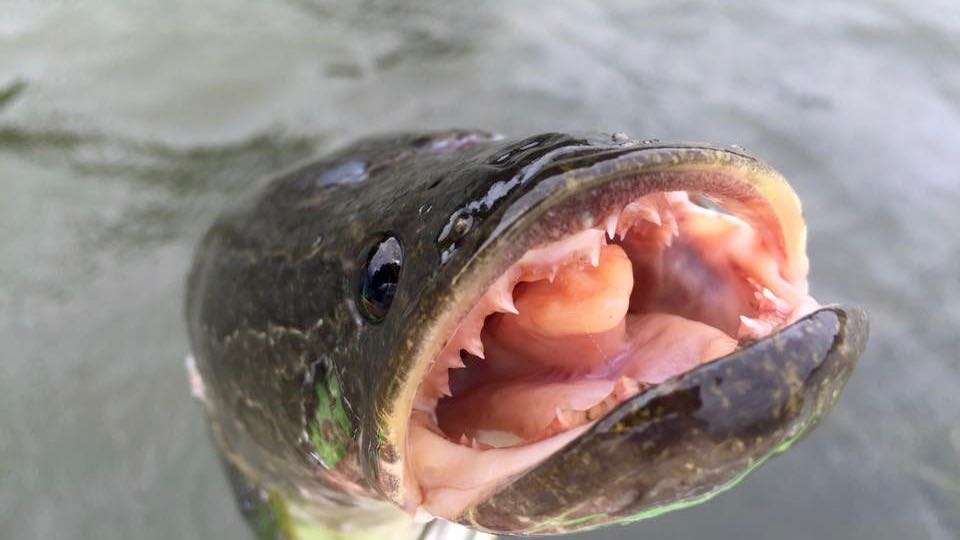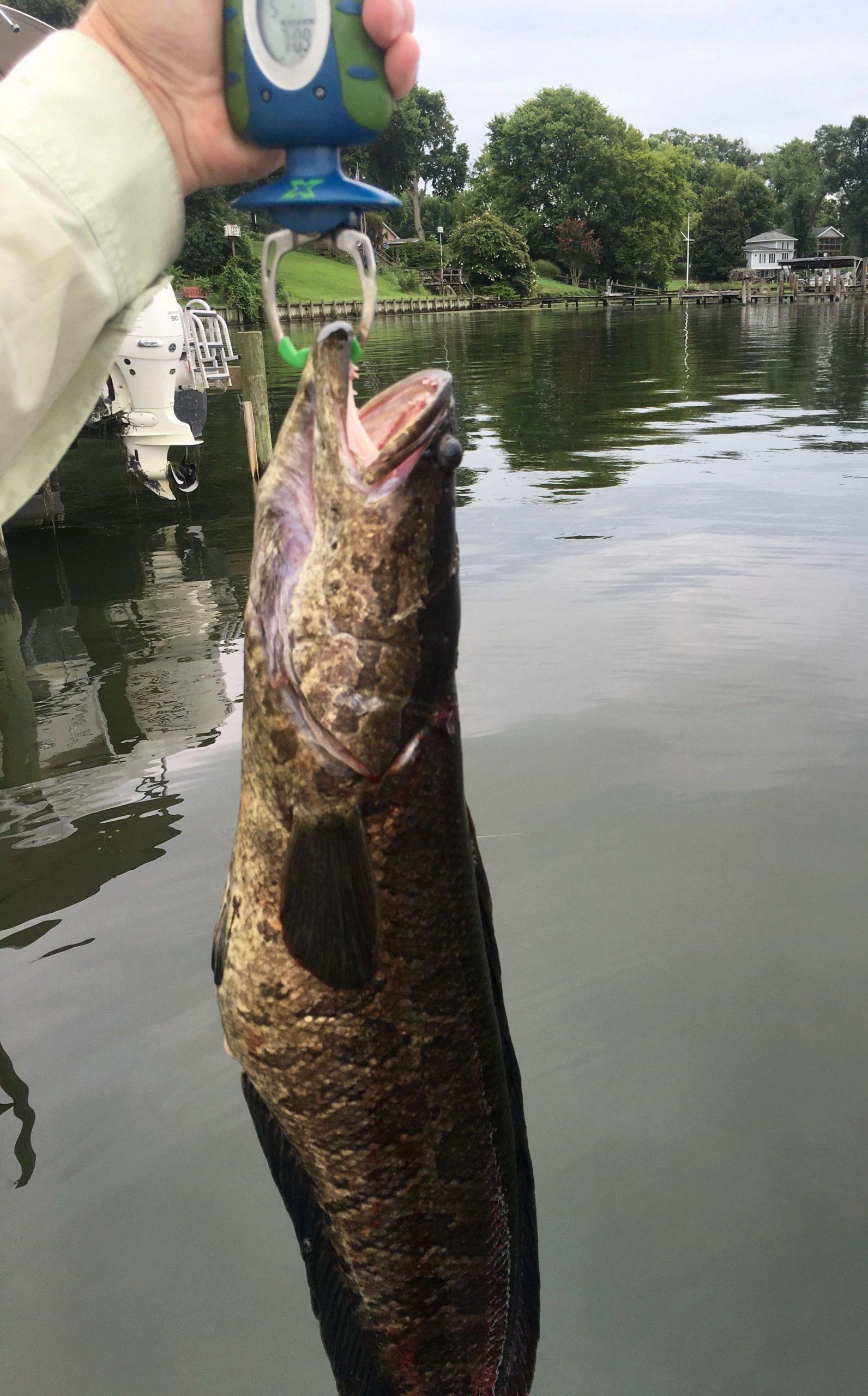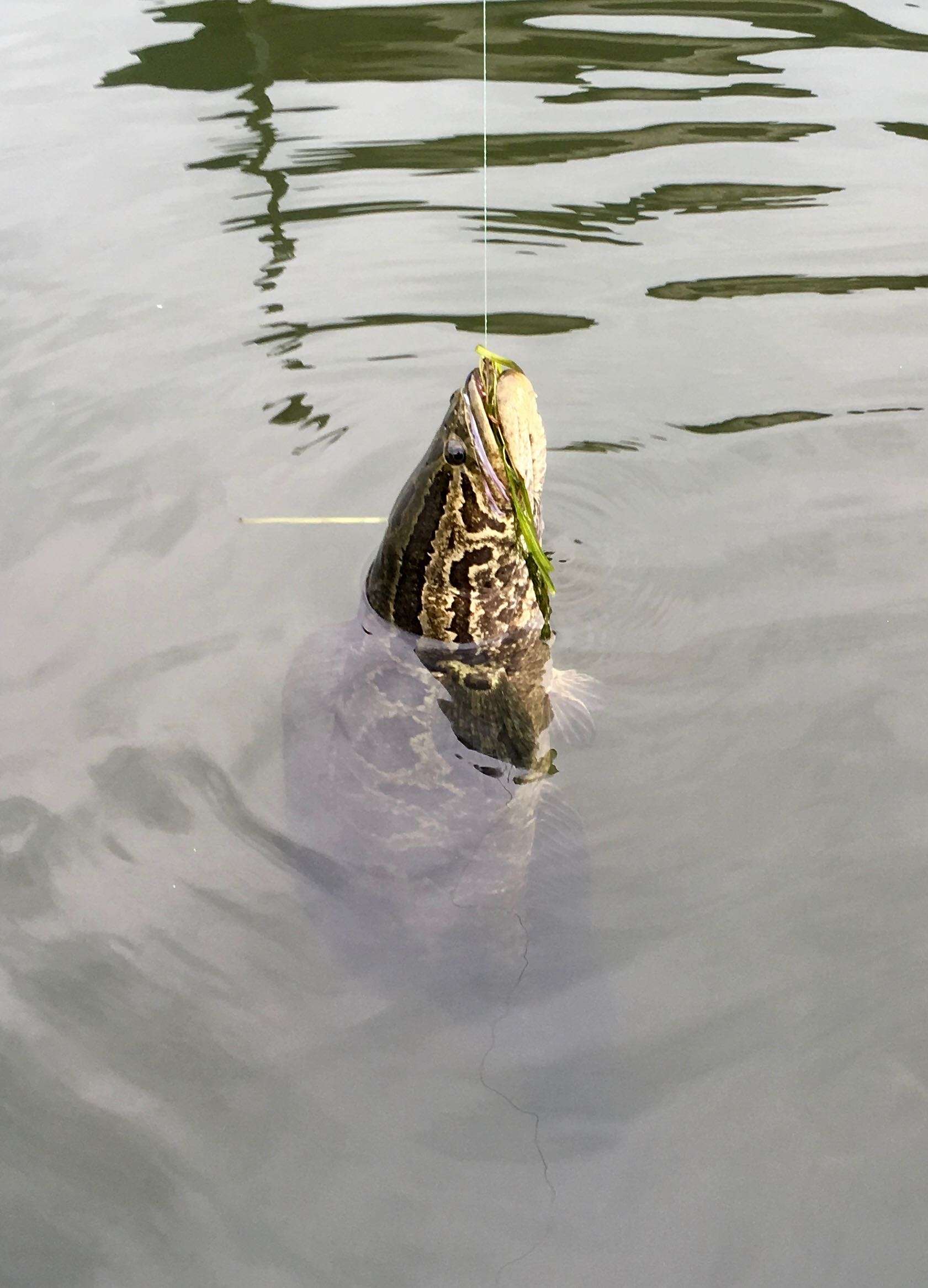
CHARLES COUNTY, Md. — Yes, it’s a bass fishing tournament. But if you want to hear some fish tales, ask the anglers about their northern snakehead experiences during the Bassmaster Elite on the Potomac River presented by Econo Lodge.
“They’re the meanest, nastiest sucker you’ve ever hooked!” said Bill Lowen. “I thought mudfish (bowfins) were bad, but snakeheads jump like a tarpon. When he gets hooked, he starts doing this dolphin stuff. It’s crazy.”
Kelly Jordon caught a 7-pound, 9-ounce snakehead, confirmed on a digital scale, during practice. He hooked a much bigger one Friday.
“I hooked one that could have eaten that one,” Jordon said. “This sucker hit it on the run and it was just, UHH! (Jordon rears back, like he’s setting the hook on a big fish), then TING. He cut me off (of 65-pound test braided line).
“It was like I hooked a six-foot alligator. I saw a bubble trail, like it was a gator shooting off through the swamp.”
Apparently, those bubbles are an indicator. Northern snakeheads can breathe air and juveniles are known to travel short distances over land. The bubbles might just be an exhale, like when an Olympic weightlifter goes for the gold medal.
“What I’ve figured out now is if you flip in there, the weeds shake and you see bubbles, it’s a snakehead,” said Jeff Kriet, who has caught two in the tournament, one flipping and another on a crankbait.
“There’s a bunch of them, man. You can see them. You aren’t getting rid of these suckers.”
Yes, state wildlife agencies along the Potomac River would like to get rid of northern snakeheads (channa argus), an invasive species native to China, Russia and Korea. They were first discovered in the Potomac over 10 years ago. They’re prolific breeders, reaching sexual maturity in two to three years. They can spawn up to five times a year, usually from mid-April through August.

Skeet Reese caught one Thursday he estimated to weigh between 12 and 15 pounds.
“My marshal, who lives here, said it was the biggest one he’d ever seen,” Reese said. “I thought it was a striper or something the way it came through the grass.”
There are bigger ones in the Potomac. Emory “Dutch” Baldwin III and a friend had already harvest 222 pounds of snakeheads while bow-fishing one evening in May when he shot and landed an landed an 18.42-pounder. Because of its invasive species status, Maryland doesn’t designate that the fish must be caught on a rod-and-reel, so it is recognized as the current record. An 18-pounder was caught on a spinnerbait in October 2015, but wasn’t weighed on a certified scale, so it wasn’t acknowledged as a record at the time.

A snakehead will bite just about any type of artificial lure. Reese caught his on a bladed jig. Jordon has caught several on a topwater frog, in addition to the one that broke him off on a soft plastic flipping bait. Lowen caught several while flipping “a little creature bait” Thursday, but also caught some on a spinnerbait in practice. Cliff Crochet landed three the first two days of the tournament on topwater frogs and bladed jigs.
“I hate ‘em,” Crochet said. “They’re ugly. They’re toothy. They’re useless as far as I’m concerned.”
Oh, yeah, they’re definitely toothy.
“They ain’t even teeth,” Lowen said. “They’re daggers. I mean they’ve got fangs.”
The unusually colored scale pattern of the snakehead gave Jordon an idea on one use for them.
“They’d make a great pair of boots,” he said.
But the best thing you can do with a snakehead is eat it. Gene Gilliland, the B.A.S.S. director of conservation, dined on snakehead with a friend in the area earlier this week. A local chef cooked it on the grill, after seasoning it simply with salt, pepper and lemon slices.
“It was really good,” Gilliland said. “It’s mild tasting, not fishy at all. Maybe a little sweet, like crappie and walleye. The texture is somewhere in between a crappie and a walleye. I was really impressed.
“If I lived here, I guarantee you I’d be taking them home…dead.”
Gilliland was referring to the fact that possession of a live snakehead is a violation of game & fish regulations. Elite Series anglers aren’t required to kill the ones they catch during this tournament, but all indications are that the percentage of live released snakeheads is near zero.
